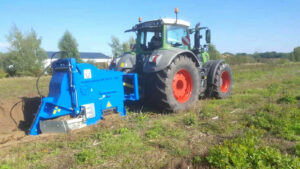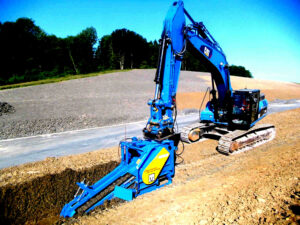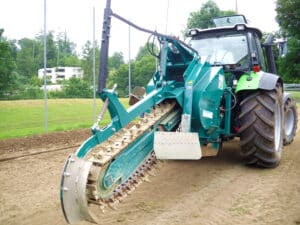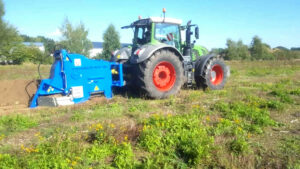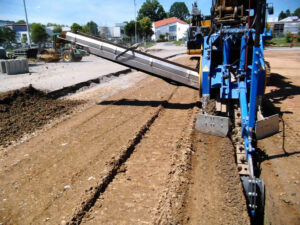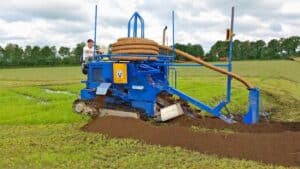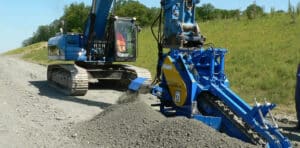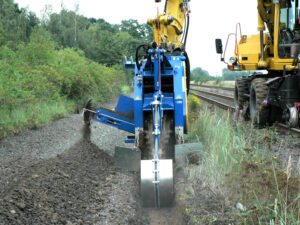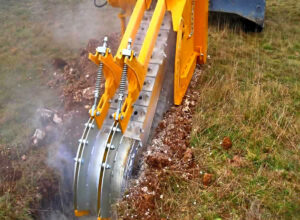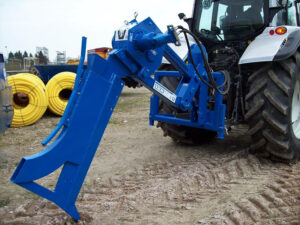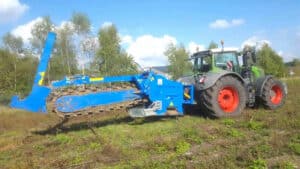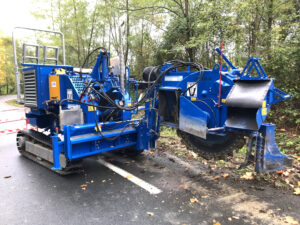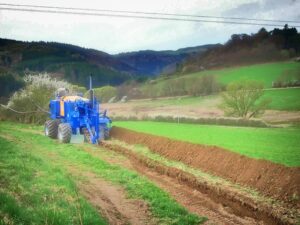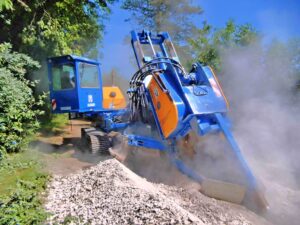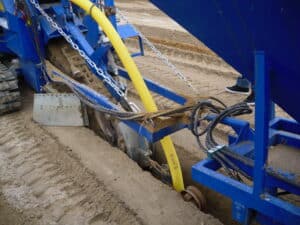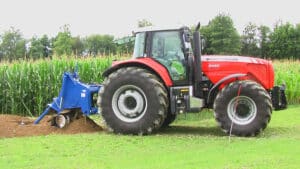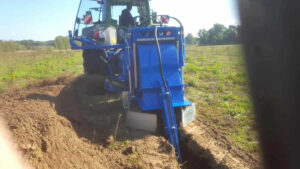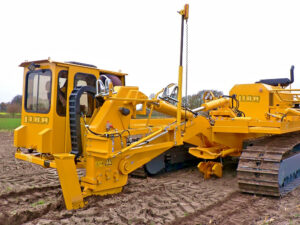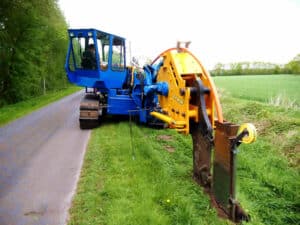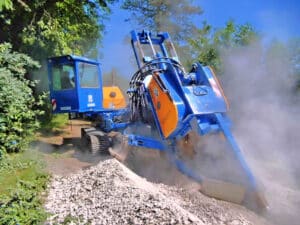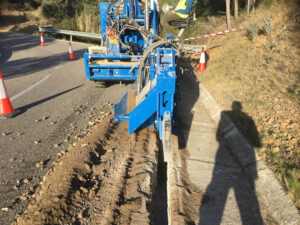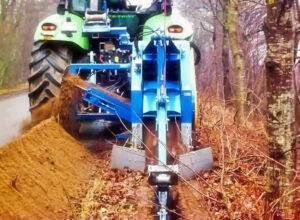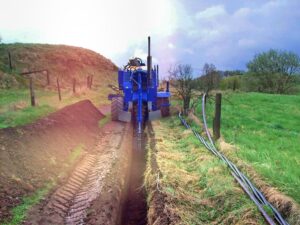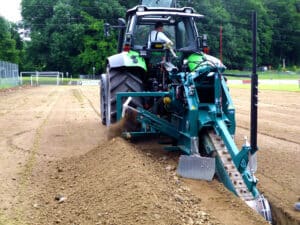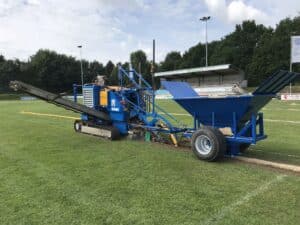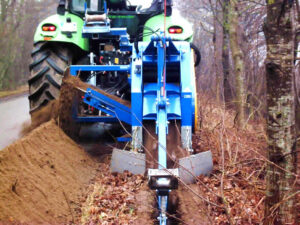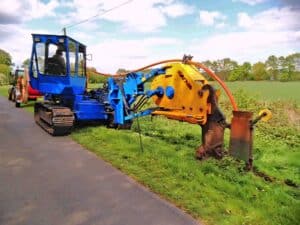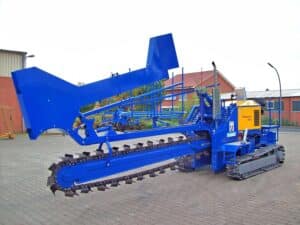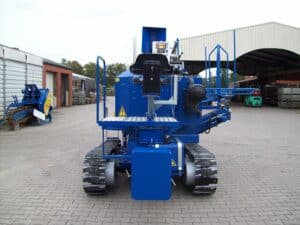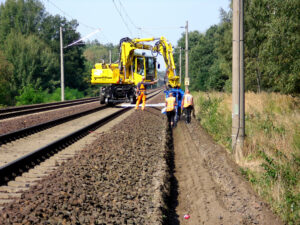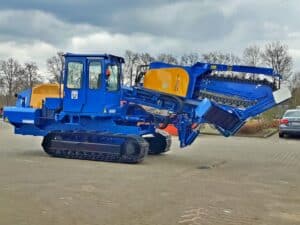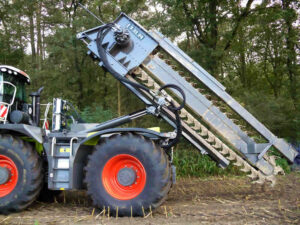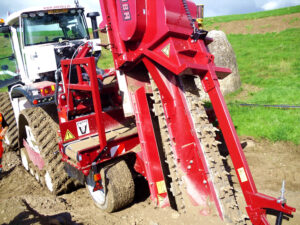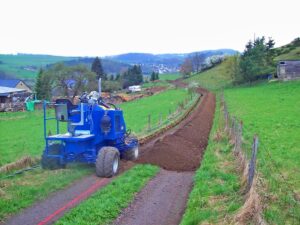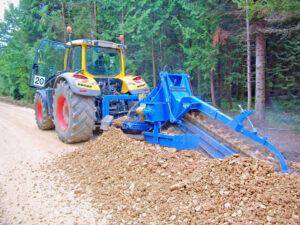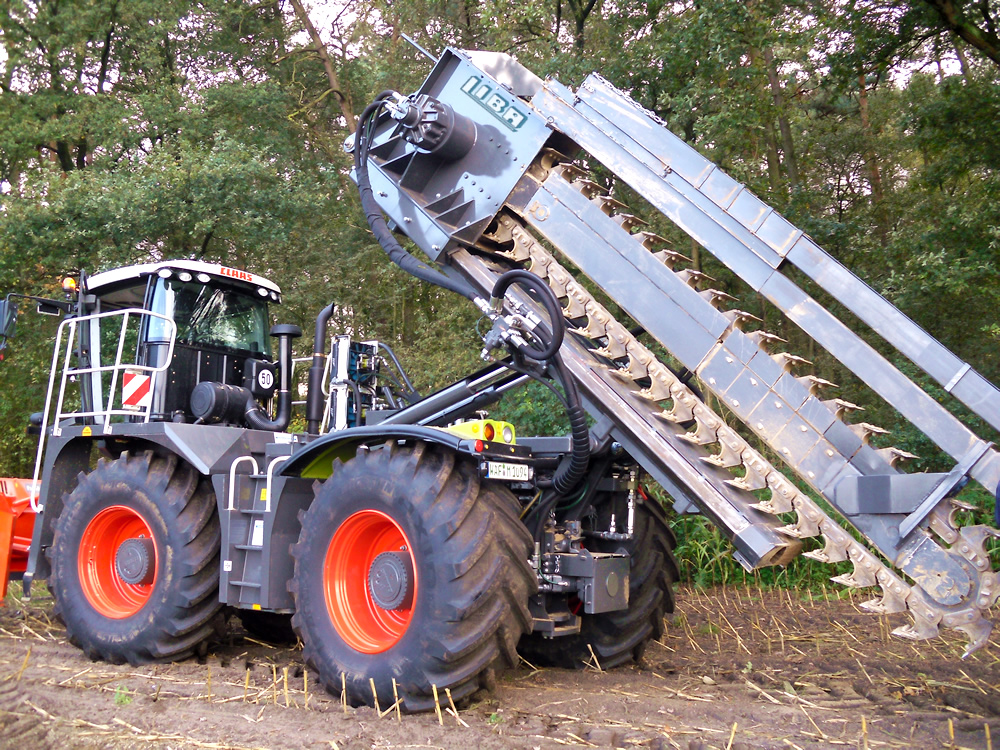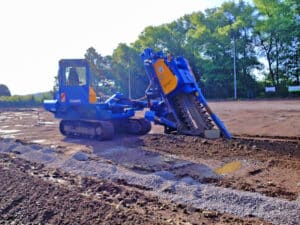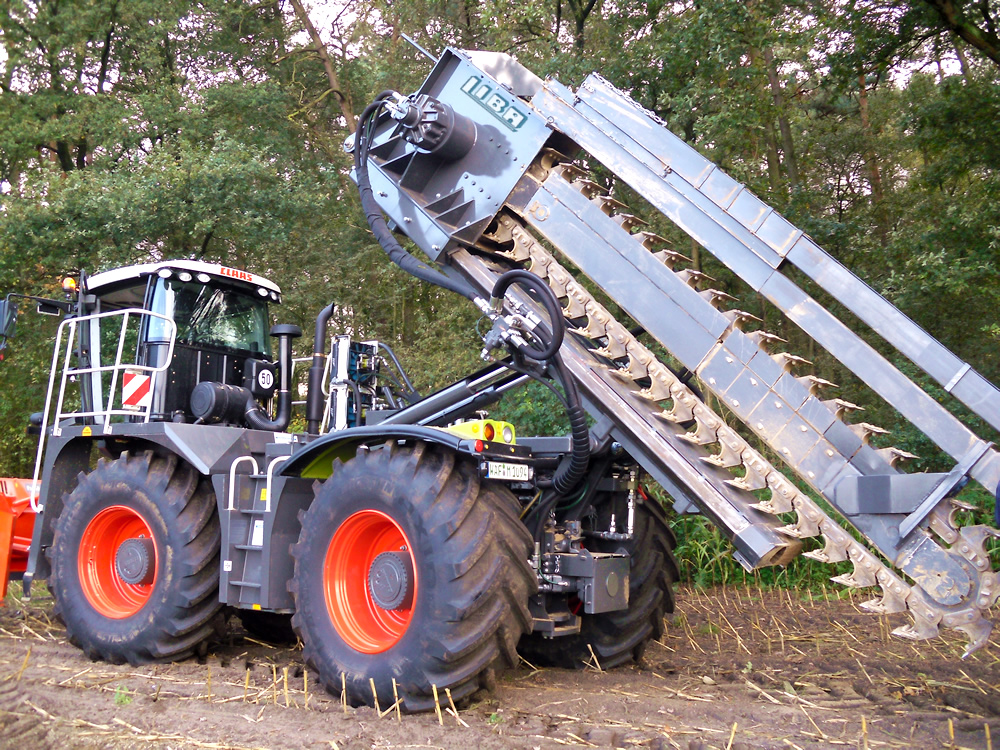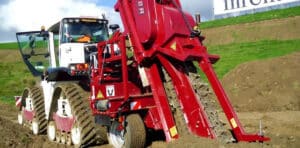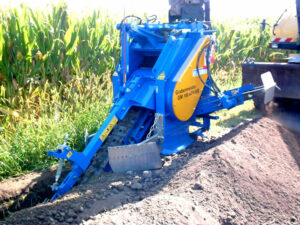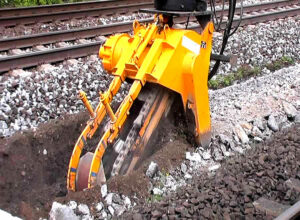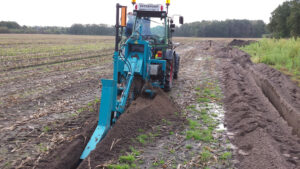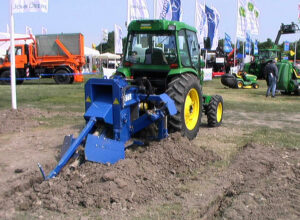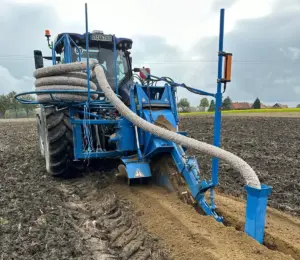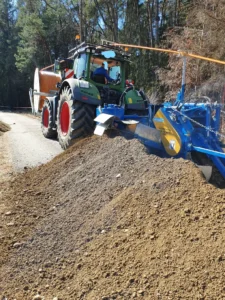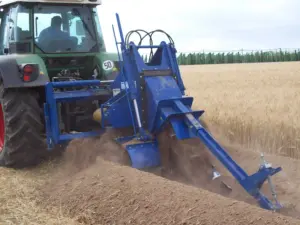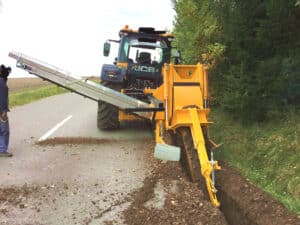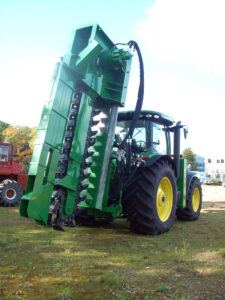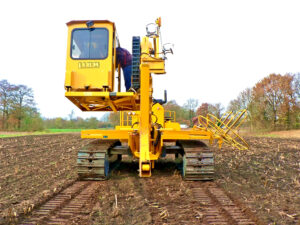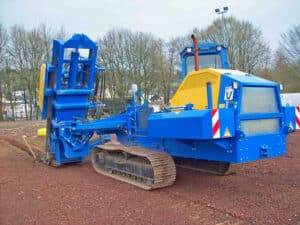Yes, self-propelled trenchers can be more environmentally friendly than some other methods of trenching. Thanks to their high efficiency and precision, they reduce the need for additional operations and thus reduce CO2 emissions. Furthermore, precise control of the tillers minimizes the possibility of over-digging and unnecessary soil removal, which reduces environmental impact.
Important information:
- Self-propelled trenchers can reduce CO2 emissions through more efficient trenching.
- Precise control prevents over digging and reduces soil removal.
Yes, self-propelled trenchers can be used in confined jobsite environments. Thanks to their compact design and precise control, they can work even in tight spaces and hard-to-reach areas. This makes it a practical choice for jobsites with limited space.
Important information:
- Self-propelled trenchers are compact and can be used in confined jobsite environments.
- They are particularly practical in areas with limited space.
Self-propelled trenchers are particularly suitable for a wide range of construction projects:
- Road construction: Self-propelled trenchers are ideal for digging trenches for laying cables, pipes and drainage systems in road construction.
- Sewer construction: When constructing sewers for wastewater disposal, self-propelled trenchers offer high efficiency and precision.
- Civil engineering: Self-propelled trenchers are successfully used in various civil engineering projects, such as the construction of pipelines or pipelines.
Important information:
- Road construction, sewer construction and civil engineering are suitable areas of application for self-propelled trenchers.
- Cable laying, drainage systems and pipelines can be excavated efficiently.
Self-propelled trenchers have an integrated engine and drive systems that move the trencher independently of external vehicles. The milling drum rotates and excavates the soil while the machine moves forward independently. This type of trencher provides high efficiency and enables precise control during trenching.
Important information:
- Self-propelled trenchers have their own engine and drive system.
- The milling drum is driven by the integrated drive.
- High efficiency and precise control are characteristic of self-propelled trenchers.
Self-propelled trenchers offer some outstanding advantages over other trenchers:
- Independence: Because they have their own drive, self-propelled trenchers are independent of external carrier vehicles and can maneuver flexibly on the job site.
- High mobility: The self-propelled features make it easy to move between different job sites without incurring additional transportation costs.
- Time saving: The high speed and efficiency of these milling machines lead to significant time saving in trenching operations.
Important information:
- Independence from external carrier vehicles enables high flexibility.
- Self-propelled trenchers can easily move between job sites.
- The high speed and efficiency advantage leads to time savings in trenching operations.
Operating costs for self-propelled trenchers can vary compared to other methods of trenching. However, operating costs are typically competitive, as self-propelled trenchers offer high efficiency and reduce the need for additional machinery and labor. It is important to consider the specific cost factors for each construction project.
Important information:
- Operating costs of self-propelled trenchers can be competitive.
- High efficiency and reduced need for additional machinery and labor contribute to cost effectiveness.
In conclusion, self-propelled trenchers provide a powerful solution for trenching in various construction projects. Their independence, mobility and efficiency make them an attractive option for contractors looking to perform precise and time-saving trenching operations. When deciding on a self-propelled trencher, project requirements, environmental impact and overall cost should be carefully weighed.
Various attachments can be fitted to self-propelled trenchers to extend their range of applications:
- Cutting discs: For cutting and removing asphalt on road construction sites.
- Sieve bucket: For separation of excavation materials and for soil recycling.
- Vibratory plates: For compacting and leveling the excavated soil.
Important information:
- Cut-off wheels allow you to cut and remove asphalt.
- Screening buckets are used for material separation and soil recycling.
- Vibratory plates are used to compact and level the excavated soil.
When selecting a self-propelled trencher, consider the following factors:
- Engine power: The engine power should meet the requirements of the construction project to ensure efficient trenching.
- Milling width and depth: The dimensions of the milling machine must meet the specific project requirements.
- Off-road capability: The ability to handle difficult terrain is critical, especially on challenging construction projects.
Important information:
- The engine power should meet the requirements of the construction project.
- The milling width and depth must meet the project requirements.
- Off-road capability plays an important role for demanding construction projects.
Safe operation of a self-propelled trencher requires strict adherence to safety precautions:
- Operator training: Personnel must receive thorough training in the operation and control of the machine.
- Safety distances: Persons should stay at an appropriate distance from the milling drum during operation to avoid accidents.
- Personal protective equipment: Wearing a safety helmet, safety glasses, gloves and sturdy shoes is essential.
Important information:
- Operators must be safely trained in the use of the self-propelled trencher.
- Safety distances to persons must be maintained to avoid accidents.
- Personal protective equipment is mandatory during operation.
In conclusion, self-propelled trenchers offer high flexibility and efficiency in trenching in various construction projects. Through proper selection, adherence to safety precautions and regular maintenance, they can contribute to successful and time-optimized construction projects. Consideration of project requirements and ensuring proper operation ensure smooth operation.
Self-propelled trenchers offer their advantages in various fields of application:
- Urban development: In urban areas where space is often limited, self-propelled trenchers enable precise digging of trenches for infrastructure projects such as utility lines and fiber optic cables.
- Pipeline construction: When laying pipelines over long distances, self-propelled trenchers can increase efficiency and reduce costs.
- Structural and civil engineering: Self-propelled trenchers facilitate trenching work on structural engineering projects such as foundations or civil engineering projects such as sewers.
Important information:
- Urban areas, pipeline construction and civil engineering benefit from self-propelled trenchers.
- Precise trenching for utilities, pipelines and foundations is made possible.


